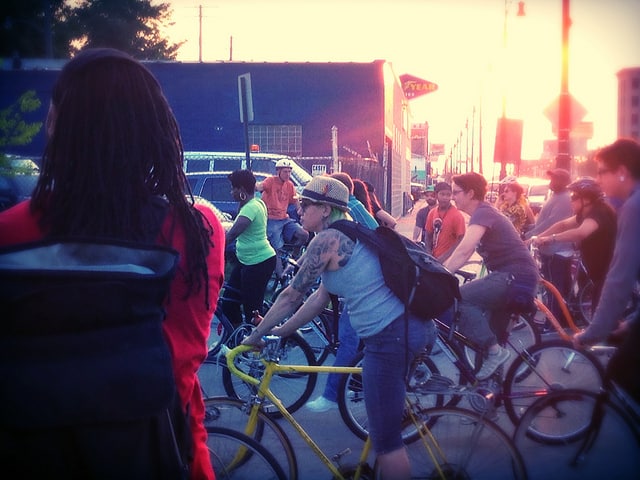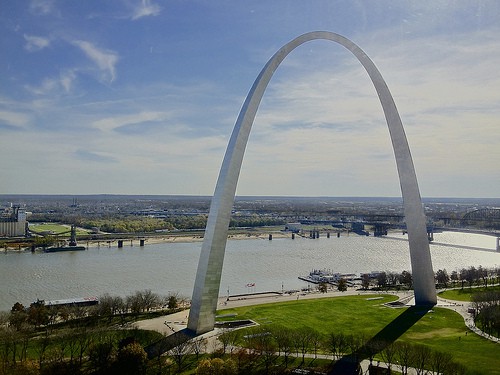The smell of human shit wakes me up in the morning, and I hate it. What makes it worse is that it comes from an alley behind my house, and when I cross it to get to my car, I know that I’m (at least partially) responsible for the smell.
My house is small and old. The plaster is cracking because the foundation still thinks it wise to settle. It needs tuck-pointing, the soil has washed away and it sits at the crossroads of two major thoroughfares. This, I initially thought of the place, is what city residents refer to as “character”?
As I leave on my commute, I see one of the largest attractions in the metropolitan area, which sits across from one of the best clinical and research hospitals in the nation. Separating the two is the intersection of a six-lane thoroughfare and the major east-west artery in the city. Sprinkled throughout this intersection are thin medians. At any given time of day, men and women walk these strips of pavement like tightropes in the hopes that someone, right before getting on the highway, will be kind enough to donate a few dollars to them.
I see signs of greatness that straddle signs of want, and they hold up a common, humdrum, everyday sort of grittiness that both pulls residents together and drives them apart.
I love where I live.
*****
Like many cities that have seen their heyday come and pass, St. Louis sits at a crossroads. This meeting of pathways isn’t just the convergence of two identities, one great and the other mediocre. In the words of M. Shawn Copeland, “crossroads not only evoke potentiality, openings, and creativity but also improbability, caution, even chaos.”1 For those who have the most to gain—and lose—from the experience of the crossroads, “the lessons of the crossroads seldom forgive.”2 Most importantly, crossroads often sit “removed from the familiar and customary.”3 It is no surprise, then, that St. Louis partakes in the history of the blues, which so prominently feature the theme of the crossroads.4

Meet you at the crossroads… (By the way, whatever happened to Bone Thugs-n-Harmony?)
Honza Krej / Shutterstock
But I’ll be honest. I think we rock where I’m from.5
Not all people who approach the crossroads experience them the same way. For some, the crossroads stand only as a chance for growth. Others, though, must learn how to navigate the intricacies of the crossroads, while knowing full well that no support might exist outside of them.
Several commentators have noticed this feature of St. Louis, and in their good intentions have offered insights into how to overcome them. The difficulty arises when, in the attempt to navigate the uncertainty of the crossroads, an observer might neglect the reality entirely and replace it with a smooth marketing veneer.
The author who catches this frenzy has a heartening message: my city doesn’t suck. Awesome.
He points out some good reasons why my city doesn’t suck, and why more people should either move here or stop moving away. He also introduces an edgy slogan that no local would dare contrive, given our hallowed sensibilities. And he’s right; if our city’s leaders were to re-image itself through slick branding that also shows the stability that one can find here, we might find some wider acceptance.
The fact is, though, in many ways and for many people, living here does suck. Without the right cultural capital, one’s experience might not be included in the “We Don’t Suck” campaign.
*****
As insignificant as these counterexamples may be, I’d like to offer two alternatives that fully appreciate the crossroads experience. These initiatives involve two common, almost mundane, activities: gardening and biking.
At first, they seem like a nice hobby or a hip way to commute in the city. Their brilliance, however, lies in their ability to attract people from numerous social categories. They draw people who have the leisure time to garden, and those who have no alternative because of a lack of access to produce. They attract people with enough wealth to live in the city and close to their workplaces, as well as those who are trapped in the city and have no choice but to bike.
What’s better is that they place these crowds in proximity to each other.
A local non-profit named Gateway Greening has devised a brilliant solution that supports gardens and gets gardeners in contact with each other. Grants are for materials, and representatives from the agency help you install them. They’re great people, and they rope you into the community of gardens almost immediately.
Rather than simply show how you will use the resources for your garden, you show how it will impact your neighborhood: who your partners are, how the relationships will develop because of the resources and what relationships you hope will emerge. Then, as part of the grant program, you commit to volunteering at neighboring gardens. The result is idea sharing, collaboration for festivals, connection with new parts of the city and even new friendships.
All from simply playing in the dirt.
In a similar fashion, small groups have cropped up that train people how to maintain bicycles for their neighbors, which strengthens community bonds and, albeit minimally, increases the mobility of folks who traverse the crossroads.
Now imagine this. The group trying to improve biking infrastructure teams up with the gardeners to offer an event that expands these networks. It gets more people in touch with each other, lets them learn from one another, and parades a truly motley crew around town so neighbors can smile and wave or gawk and stare as the group hops from one garden to the next. And, of course, they return to a garden to share food that came from the city’s own earth.
These are small endeavors. They do not save anyone from the chaos of the crossroads. They do, however, remind adults of their childhoods and afford children safe places to be kids.
That said, the commentators who try to downplay how much St. Louis sucks do make a valid point. The creativity and bonding do not eliminate the improbability or the chaos. That putrid smell still remains, and the experience of the crossroads cannot escape it. We have created our own stench with grand plans that we thought would solve our problems but that managed to neglect the very people they intended to serve.6
Not only does St. Louis, along with many other cities, remain hidden on the national scale, but these small ventures remain hidden within the city. The people engaged in these projects—the gardeners, the bikers—also remain hidden, either because they want to or because they have no choice.
Yet, they accomplish exactly what a city should: they place people in proximity to each other and give them reason to collaborate and shape something beautiful. And I love it.

